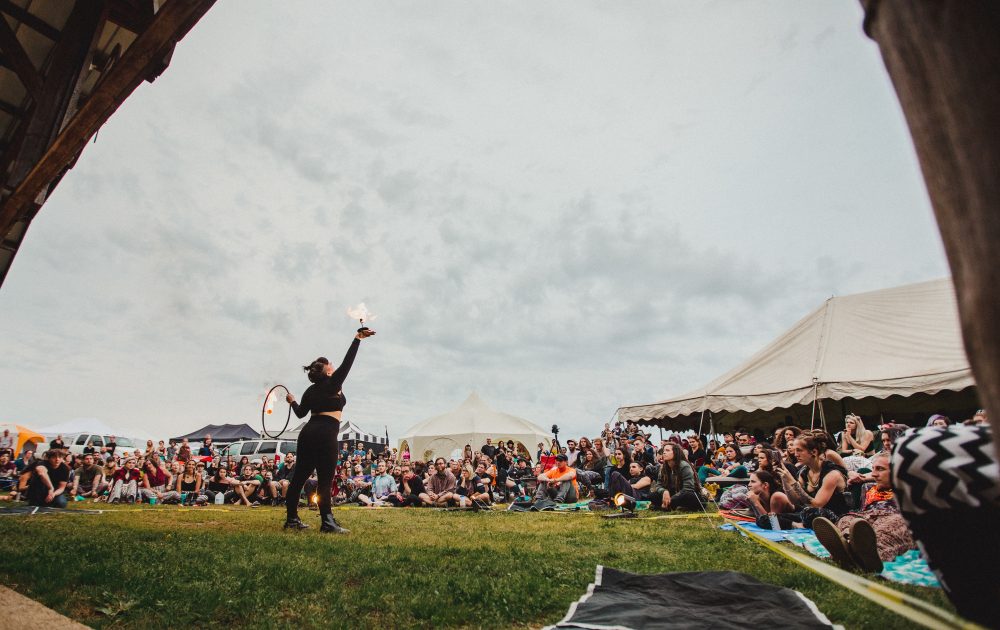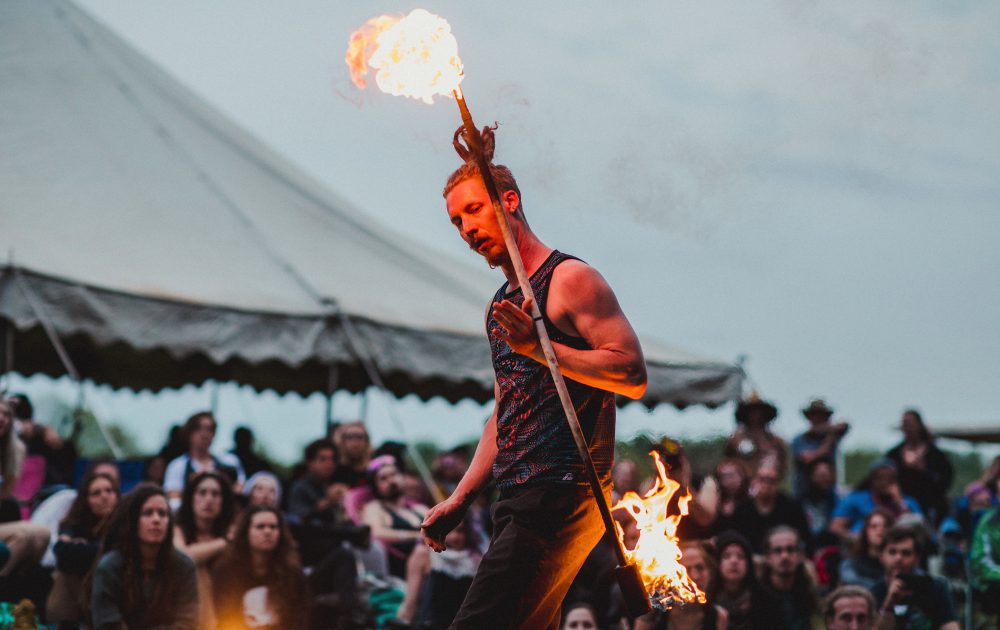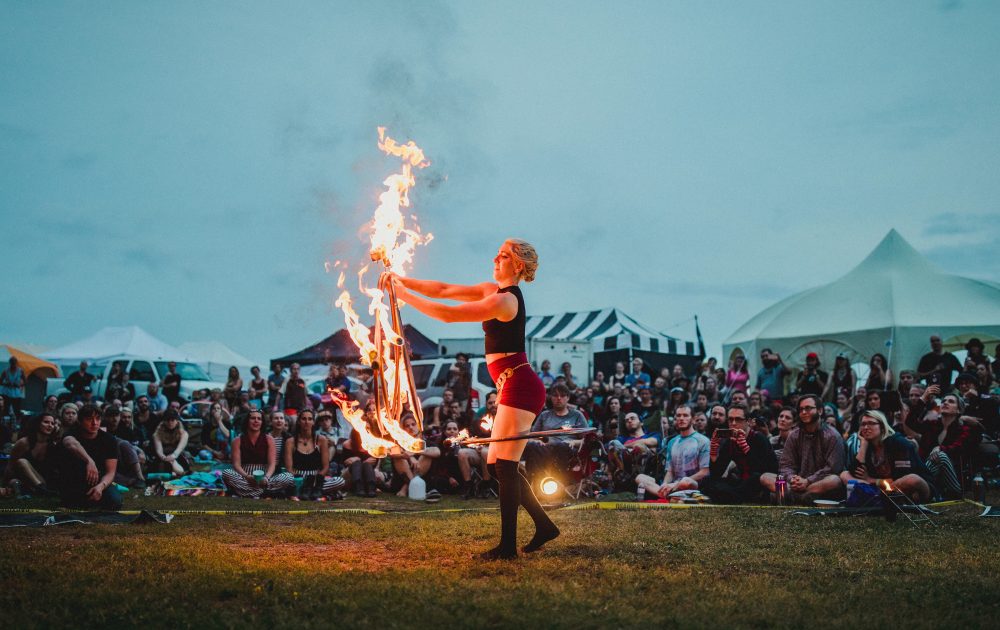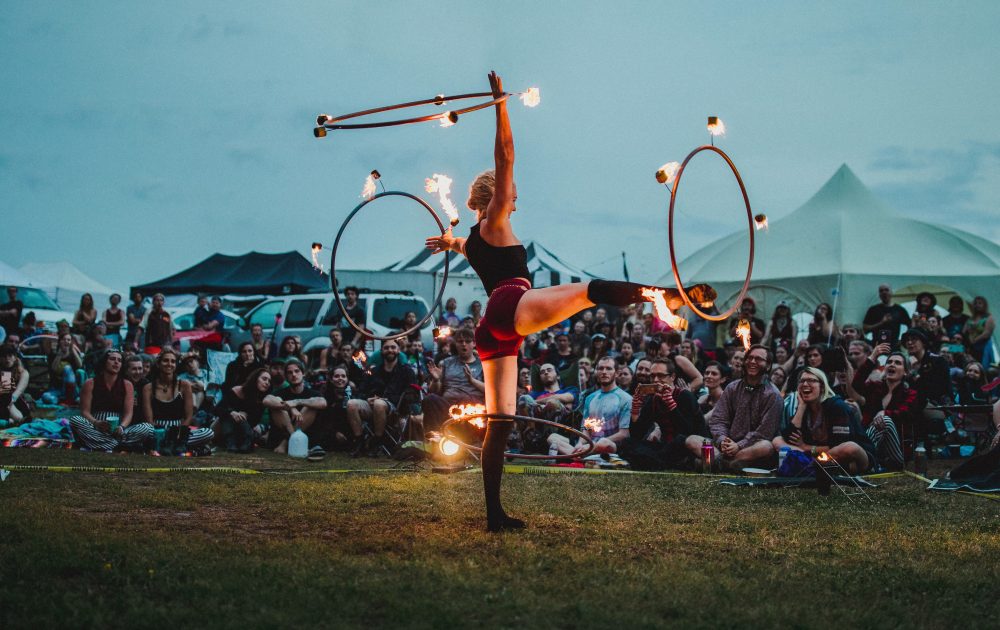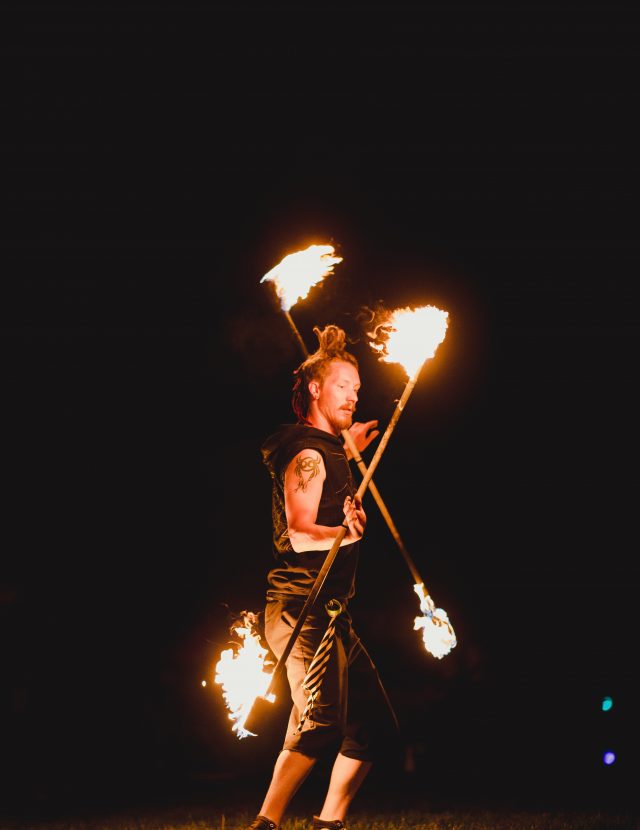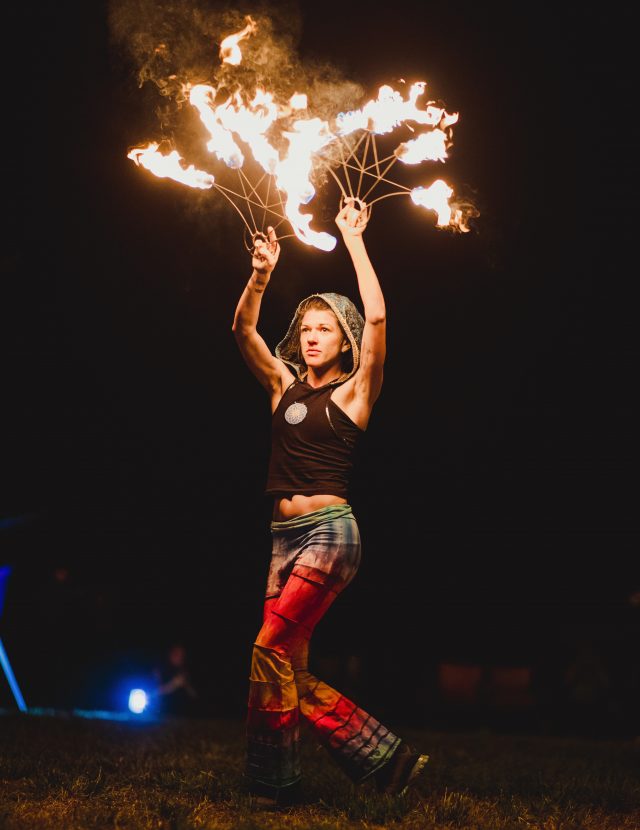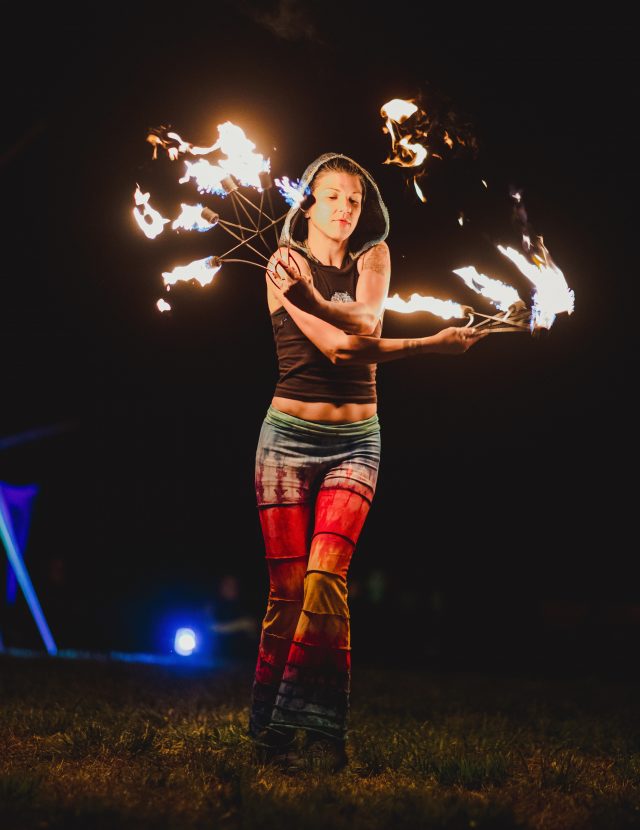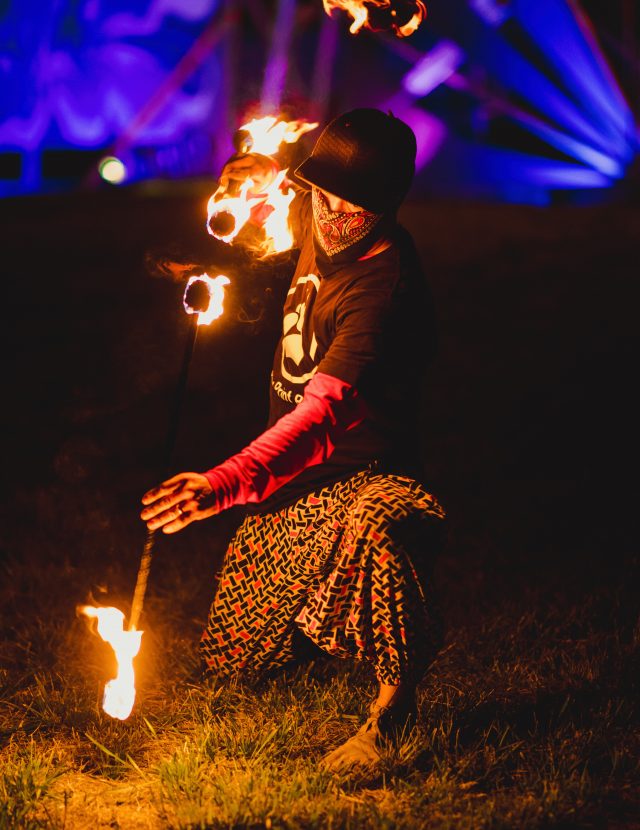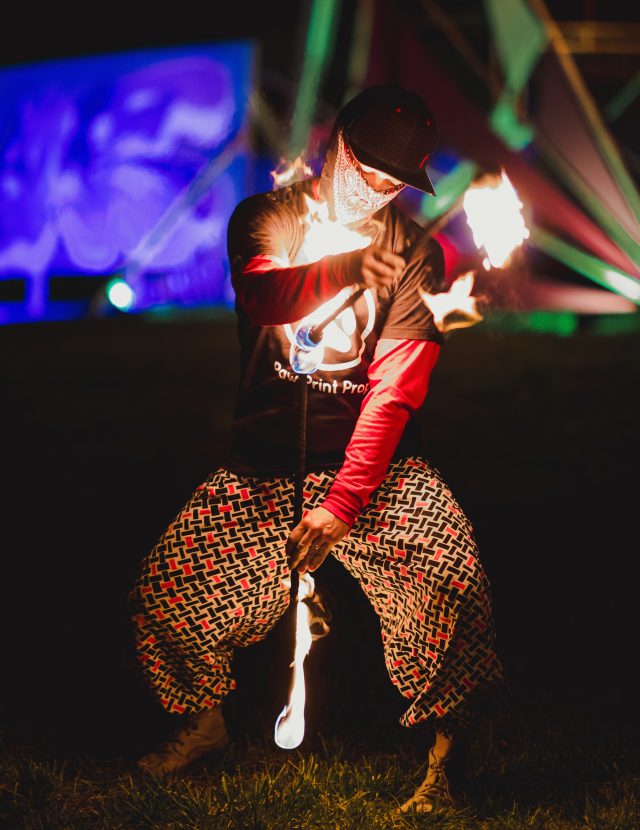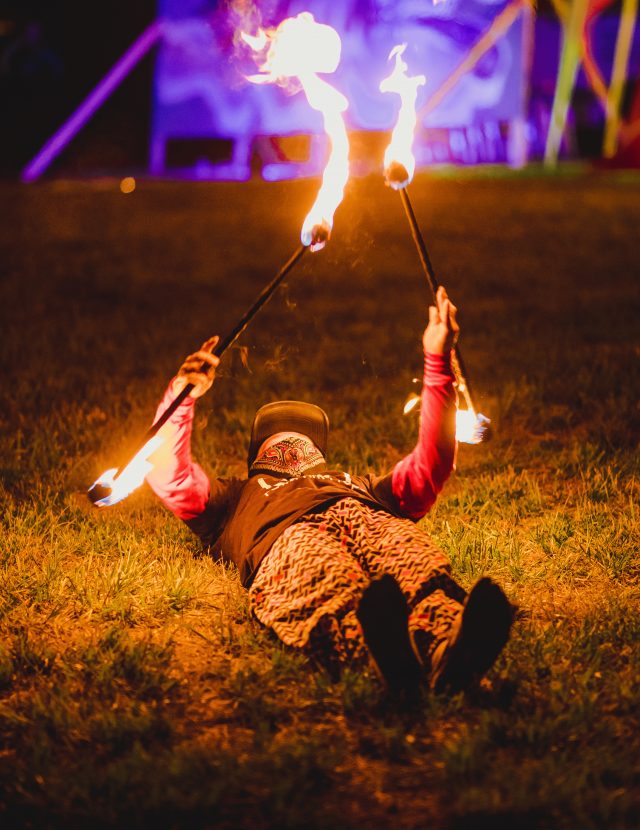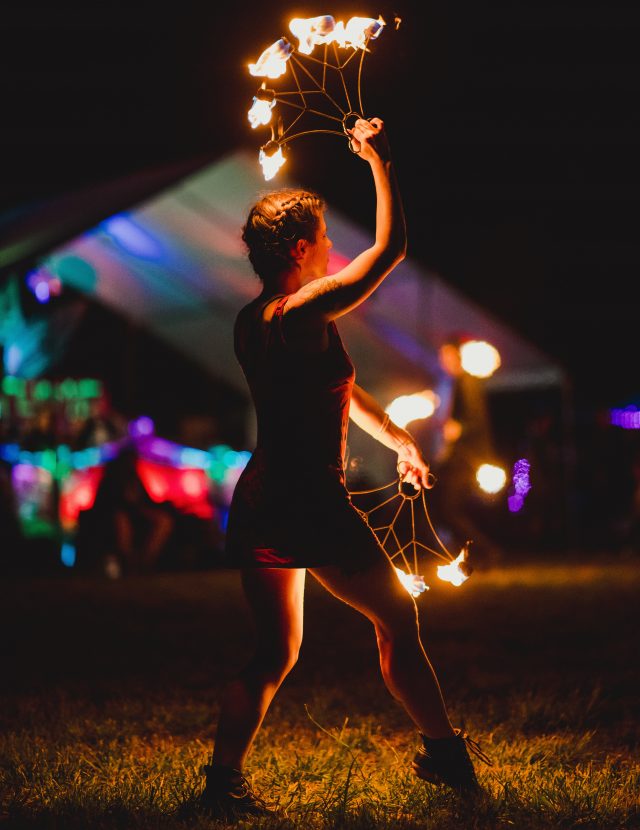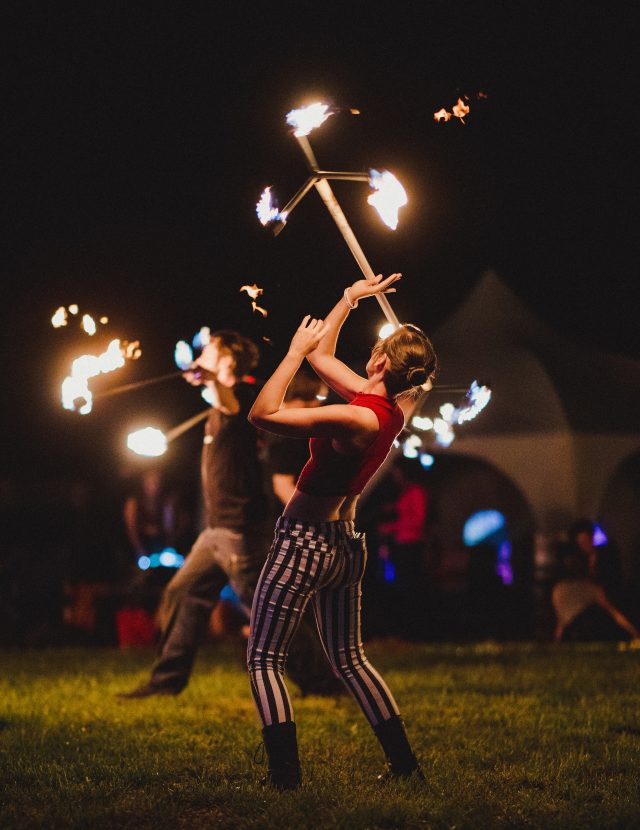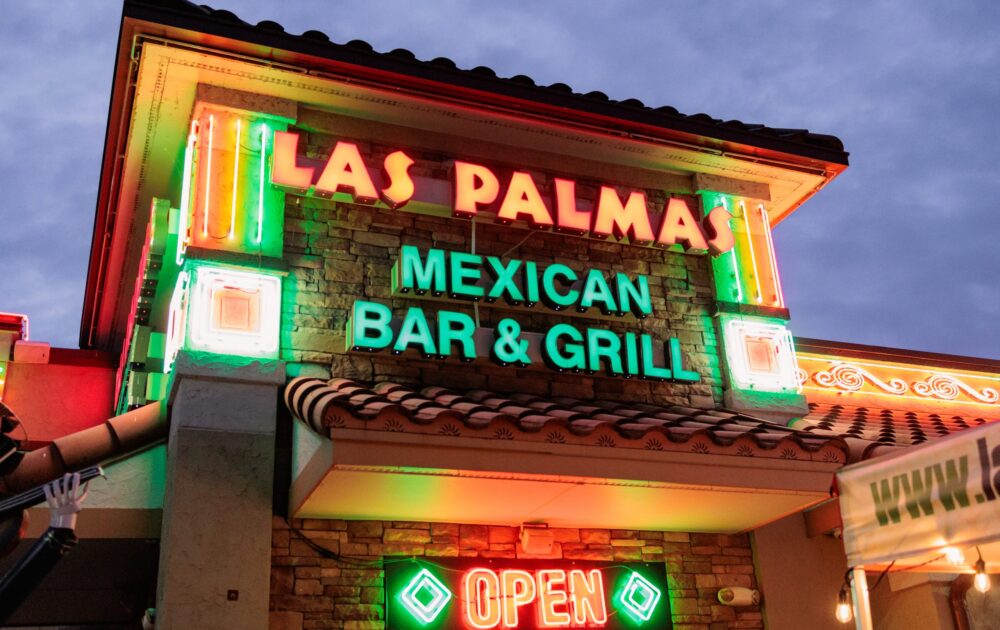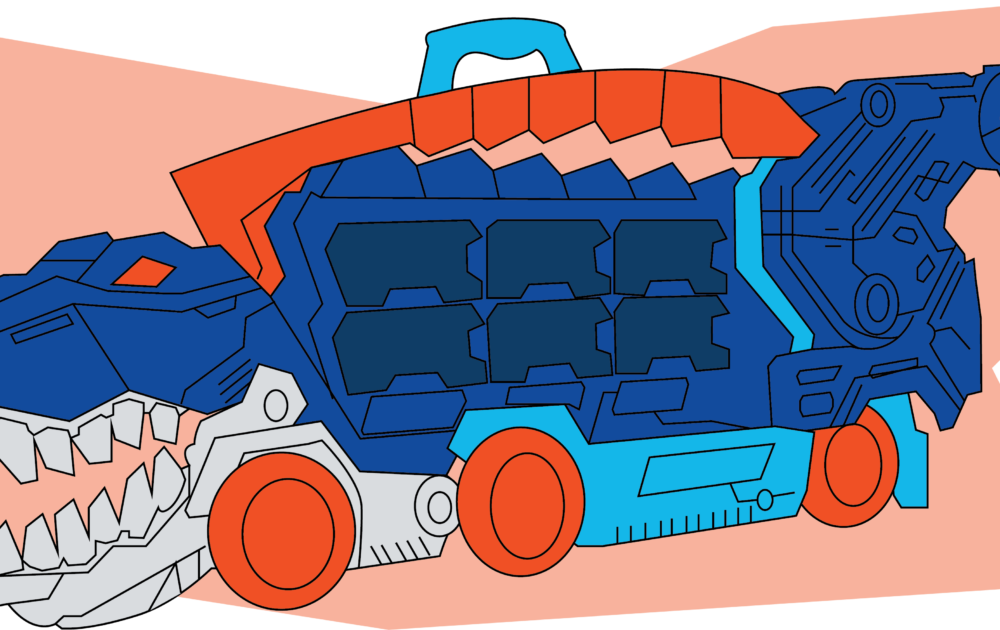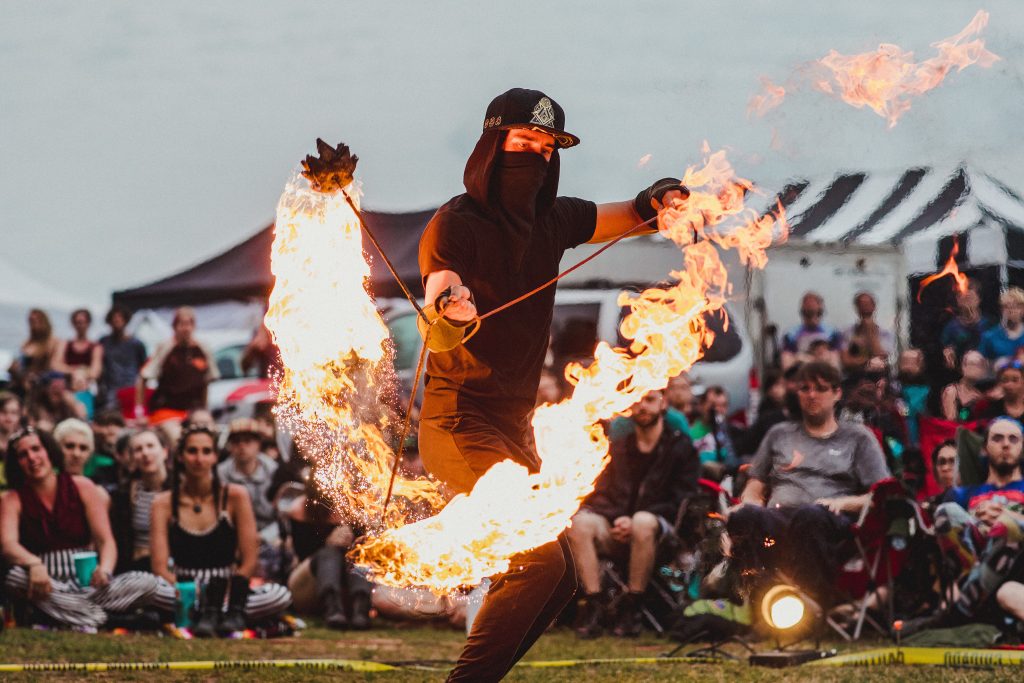
Photography Cameron Flaisch
During FLAME festival, flow arts performers open the door to curiosity and see what is on the other side.
Since the beginning of mankind’s quest to survive and define what their role is in nature, there has been an insatiable need to discover the world around them. Through trial and error, animals that walked upright used their curious minds to pull back the edges of the unknown and conquer the elements. They learned to expand their reach by harnessing the beauty around them.
Soon, the will to create art to please the spirit sprang forth ushering in a new goal, a new direction and a new level of discovery. Nature would not only be a means for nourishment, transportation and basic necessities, it would become the vehicle for finding inner peace and inspiration.
Today, that journey continues.
From the majestic mountains created by the crust of the earth grinding together and climbing to the heavens, to river waters that tumble over each other as they burrow through the valleys, the blueprint to combine human ingenuity with gifts from the land opened the door for purpose beyond functionality. Primitive cave drawings and cathedrals cast from the visions of masters all paved the way for people to push the boundaries for what is possible, and those limits continue to be fluid; they are never clearly defined.
Nestled deep in the foothills of Appalachia is proof that art, motion and sharing the experience with the world is alive and well, along with the people who keep the wheels of art evolution in motion. What started as a group of performers who wanted to lean on impossible and push the peak to the side with hopes of making it attainable to others has grown into the largest gathering of flow arts performers on the east coast.
And just what are flow arts, you may ask? Well, it is the perfect example of ignoring comfortable limits, with the goal to fill the world with beautiful people doing beautiful things.
FLAME Festival is an annual gathering of aspiring flow artists, fire performers and instructional specialists who find a home at Cherokee Farms in Lafayette, Ga. every spring. This year, the FLAME Festival family settled in during the month of April. Organized by the Flow Arts Institute, FLAME Festival is just one of the many retreats and workshops the organization offers throughout the year centered on movement-based disciplines. Those disciplines include, but are not limited to belly dancing, circus performance skills, fan dancing, hula hoop or hooping, juggling, sphere manipulation, staff spinning and a unique skill that those in the know call Poi.
Before getting into the characteristics of each discipline, it helps to know how this movement has grown and to understand the overall goal of the Flow Arts Institute. For the back story, Nick Garcia who serves as the General Manager for FLAME Festival, talks about how he was introduced to flow arts.
“I am from Marietta, Ga. I was not born here in Georgia, but this is where many of my memories originate,” says Garcia. “I now live in Florida, so coming back for this event is always nice for me. I started learning about flow arts through my work with Poi, and that sort of started my journey.”
Poi is a flow art that uses a technique involving two ropes, and on the ends of the ropes there are two weighted spheres. Much like the pendulum of a clock, the artist uses the weight of the spheres to swing the ropes from side to side and in circles. More advanced artists add fire to the spheres, creating trails of brightly colored flames as the ropes spin in rhythm.
“So, I started going to gatherings where people were really practicing intentionally,” Garcia continues. “Then they started talking about the cool new idea that was coming together and it was still pretty new back in 2010. I was invited by some friends, friends who shared by passion, to an event where they were going to take a few classes in flow arts. It was at that flow arts festival where I experienced a huge personal pivot in my life. I saw a lot of the things I was trying to learn, and the environment was safe and really geared towards educating people who want to know more about flow arts.”
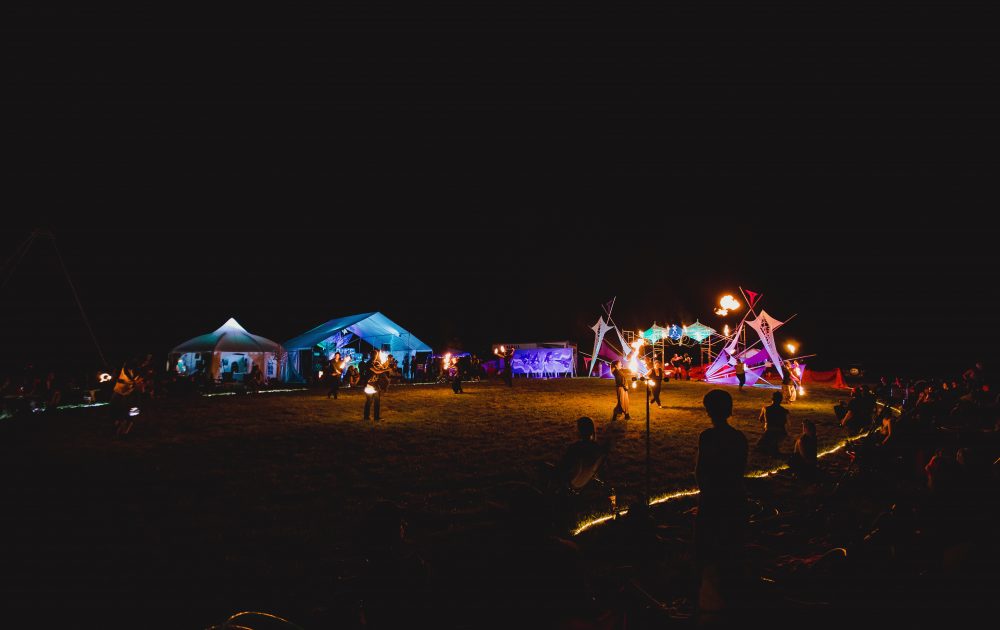
Garcia had a background in sales and marketing. He said that the combination of flow arts and the event management side of hosting the festivals was what eventually drew him in to what he has called a career for the past nine years.
“My introduction to flow arts was mainly through the Burning Man community,” Garcia recalls. Burning Man is similar to FLAME in that the time spent there is about self-discovery through the arts. However, the intent of FLAME Festival is strictly focused on movement and learning how to grow as an artist.
The winding gravel road that slithers through the countryside of Cherokee Farms eventually opens to a field of bodies in motion. Twirling staffs, jugging batons and hoops fitted with torches not yet on fire flip and fly through the space; all senses are stimulated. Around the circle of performers, who are novice and professional, are tents displaying their wares. Art is everywhere and everyone is art. Lean ladies dangle from ribbons tied to supports and spin like slender spiders caught in the wind. Their legs paint pictures of power and control.
Jugglers toss torches to one another as a hooping artist rolls a hula hoop across her back as if it is attached to her shoulder blades. Poi spin round and round in the hands of performers as their bodies bend and move in the space allowed by their tools. The staffs whip around the necks and arms of their wielders as if they are taking center stage for a forbidden dance. There is danger, there is beauty. There is skill and there is curiosity. The sights set the scene for FLAME Festival and observing is not an option. If you bought a ticket you are here to learn and to become fully immersed in the culture of flow arts.
“In 2012 I attended my first FLAME Festival and I wanted to make sure I was absorbing as much as I possibly could. This gathering started in 2011 by a gentleman named Ky Lee. He was also a mentor to me,” says Garcia. “He really opened me up to advance Poi moves and we always had really intentional conversations.”
Garcia said that production for the retreat starts about six months out. Since the goal is to provide a better learning environment for flow artists, Garcia and his crew focus on ways to bring in more instructors and offer more to eager guests.
Just adjacent to the center of the festival grounds is the camping area reserved for those who are planted in the field from Thursday until Sunday. On Sunday, the festival goers pack up and head back to their homes located across our nation and beyond.
Woven throughout the campground are workshops and learning opportunities. There is also a space where chow is served. Security is tight, because this is not a place focused on a party. Attendees are strongly encouraged to participate. From fire walking to yoga, there is something for people who want to expand their understanding of the arts.
“Our classes during the day focus on skill development. We use this time to teach the technical manipulation of a prop. We also talk about performance and persona management. We tackle topics like gaining the confidence to go out and do these things in front of an audience. These are the parts of this festival that are easy to see. What is harder to quantify is the internal growth we hope to inspire in others. They are out here learning, and since we are a very close group who stays in touch with each other, we build relationships within our community of artists. We want our guests to look inward and decide what this all means to them,” Garcia says.
From the popular traveling non-conventional circus act, Cirque du Soleil, to professionals who travel the world and teach flow arts, everyone at FLAME Festival is there to teach and to learn. At the end of each day of instruction and just after the sun sets, there are galas and what they have named, “Flowcases” where more skilled performers dip their tools in fuel and light the fire. Crowds gather to watch and to be inspired and they work with tools of their own. Since safety is priority, no one under the influence of alcohol is allowed inside of the fire circle, and all wishing to participate with live fire must take the safety class and be certified. All around, specially trained fire handlers are watching with a careful eye to ensure that no flame gets out of control.
“From the hospitality staff to our leadership, this is all about forming relationships with others who enjoy the flow arts. We have friends from around the world, and guests from 20 to 70 years old who join us and have become a part of our family. We try to keep the festival small so that we can be sure to maintain those close relationships,” smiles Garcia. “We know that each person here wants to learn, and this philosophy has been what has made this one of our most successful events. In the end, it is all about the people who are involved. We are always looking for people who have that spark and who are really impacted by flow arts. So, we want to keep uplifting that feeling. This is a family and they are always included in our family.”
See this summer’s issue of GRAND Magazine, for columnist Nina Lovel’s firsthand experience at FLAME Festival. For more information about flow arts and Flame Festival find them on Facebook (FLAME Festival 2019), on Instagram @flame.festival, or on the web at FLAMEfestival.com.

